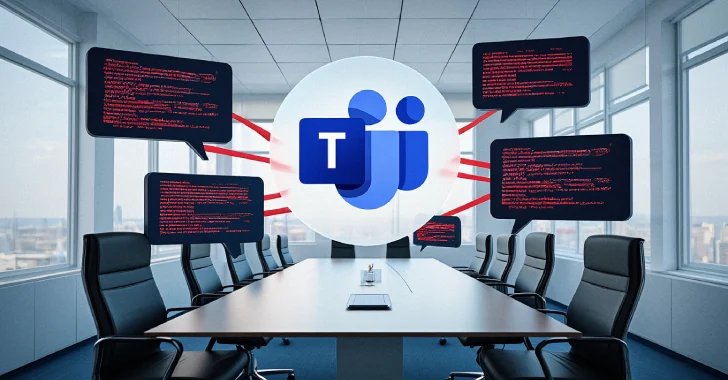Summary Points
-
Evolved Malware-as-a-Service: Matanbuchus, a sophisticated malware loader, has evolved to version 3.0, now featuring advanced stealth techniques, enhanced obfuscation, and support for various payloads such as Cobalt Strike and ransomware.
-
Targeted Delivery Methods: Unlike traditional spread methods, Matanbuchus is often deployed via social engineering tactics, tricking victims into executing malicious scripts during seemingly legitimate interactions, such as impersonating IT support through Microsoft Teams.
-
High Cost and Functionality: Matanbuchus 3.0 is available for rental at $10,000 to $15,000, incorporating complex capabilities like in-memory execution, command execution via PowerShell, and persistence through scheduled tasks, posing significant risks to enterprises.
- Advanced Threat Landscape: This malware fits into a growing trend of stealth-first loaders that utilize living-off-the-land binaries (LOLBins) and exploit enterprise communication tools, complicating detection and response strategies for cybersecurity professionals.
The Core Issue
On July 16, 2025, cybersecurity researchers, notably from Morphisec, reported the emergence of Matanbuchus 3.0, a sophisticated variant of a malware loader known for its stealthy evasion tactics. Originally introduced in 2021 as a malware-as-a-service (MaaS) option, Matanbuchus is employed primarily through targeted social engineering rather than conventional means like spam emails. The loader has gained notoriety for facilitating next-stage payloads, such as ransomware and Cobalt Strike beacons, by deceiving users into executing malicious scripts, as exemplified in a recent incident involving an unnamed company. Attackers impersonated IT support through Microsoft Teams calls, tricking employees into running Quick Assist, thereby unwittingly deploying Matanbuchus.
The enhanced features of Matanbuchus 3.0 include advanced communication protocols, in-memory capabilities, and sophisticated obfuscation techniques, making it a formidable adversary in the cybersecurity landscape. Researchers highlighted that this malware not only gathers vital system information but is also adept at evading detection through mechanisms like scheduled tasks and a versatile command-and-control infrastructure. As the landscape of cyber threats continues to evolve, Matanbuchus epitomizes a growing trend toward stealth-focused malware, with a particular emphasis on exploiting enterprise collaboration tools, raising alarms among cybersecurity professionals tasked with safeguarding digital environments.
Potential Risks
The emergence of Matanbuchus 3.0 as a sophisticated malware-as-a-service poses severe risks not only to the organizations directly targeted but also to a broader network of businesses and users connected within the same ecosystem. This loader, leveraging advanced evasion techniques and social engineering tactics, can infiltrate legitimate channels, such as Microsoft Teams, undermining trust and compromising sensitive information. When an organization’s defenses are breached, it sets off a chain reaction—exposing other interconnected businesses to the same vulnerabilities, eroding customer confidence, and potentially leading to catastrophic financial losses and reputational damage. Moreover, as attackers utilize this malware to gain access to enterprise tools, the risk of widespread disruption and data exploitation increases exponentially, threatening the integrity of collaborative infrastructures across various sectors. Thus, the implications extend far beyond individual companies, posing a systemic risk to the business landscape as a whole.
Possible Actions
In today’s digital landscape, understanding the implications of cybersecurity threats is paramount, particularly in light of hackers exploiting platforms like Microsoft Teams to disseminate Matanbuchus 3.0 malware, targeting vulnerable organizations.
Mitigation Steps
- User Education: Conduct training to raise awareness about phishing and secure usage of Microsoft Teams.
- Access Controls: Implement stringent permissions for file sharing and communication within Teams.
- Monitoring Tools: Utilize advanced threat detection systems to monitor unusual activity.
- Patching: Regularly update software to safeguard against vulnerabilities.
- Incident Response: Establish a well-defined incident response plan to act promptly if malware is detected.
- Backups: Maintain regular backups to restore systems quickly without succumbing to extortion.
NIST CSF Guidance
The NIST Cybersecurity Framework (CSF) emphasizes the necessity of identifying, protecting, detecting, responding, and recovering from cybersecurity incidents. Specifically, refer to NIST SP 800-53 for detailed control guidelines to bolster organizational defenses against such malware threats.
Continue Your Cyber Journey
Discover cutting-edge developments in Emerging Tech and industry Insights.
Learn more about global cybersecurity standards through the NIST Cybersecurity Framework.
Disclaimer: The information provided may not always be accurate or up to date. Please do your own research, as the cybersecurity landscape evolves rapidly. Intended for secondary references purposes only.
Cyberattacks-V1

